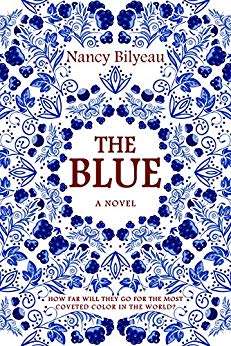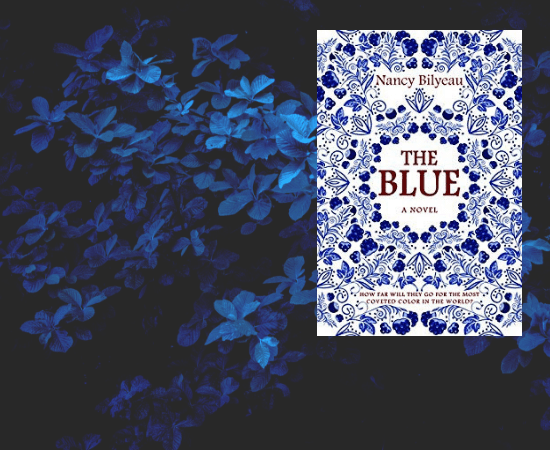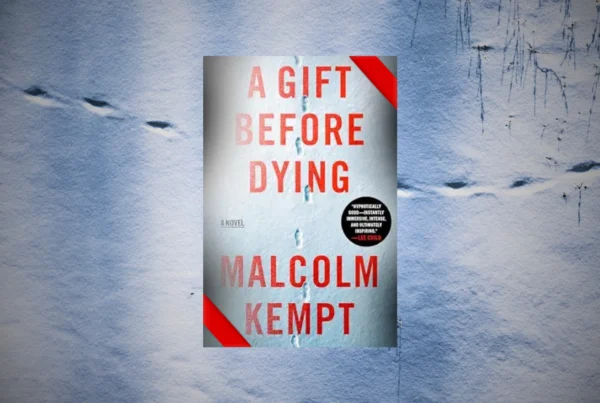The Blue
The color blue—one of the rarest colors on earth. It is the color of the sky and sea, of eternity, of divinity. And sometimes the color of death.
A color which proved to be at the heart of the race for the most coveted porcelain in the world. In The Blue (Endeavour Quill), Nancy Bilyeau uses the 18th century race to manufacture porcelain—adding spies from England and France—to create a historical thriller with an ingenious premise.
Twenty-four-year-old Genevieve Planché is a passionate painter but may not pursue her art; historical painting is not appropriate for women in 1758 England. Although she paints flowers on silk dresses, and will soon become a decorator at Derby Porcelain Works, her work is almost a mockery of her desire to paint the world with her brush, like William Hogarth.
After being shamed for trying to gain notice at a party of artists, sophisticated patron of the arts, Sir Gabriel Courtenay, offers Genevieve her dream. But that dream comes with a price. If she will spy for him at Derby to secure the formula for the world’s most beautiful blue, he will pay for her move to Venice where she can apprentice as a historical oil painter.
Upon her arrival at the Derby Porcelain Works, Genevieve begins her quest to locate the chemist working on the new blue but must pace her inquiries to hide her true intentions. She is surprised to become friends with Evelyn Devlin, the step-daughter of the major financier for the factory. Investigating the location of the chemist and communicating her findings to Sir Gabriel with invisible ink proves to be tricky since she shares a bedroom with Evelyn. And soon, the guilt of deceiving Evelyn plagues Genevieve. She is ashamed to be a liar and a spy.
When Genevieve finally meets the chemist, Thomas Sturbridge, he is nothing like she imagined. His youthful smile and pleasant demeanor quickly capture her heart. How can she betray him by continuing her mission to steal his formula for the color that will revolutionize the porcelain industry? And if she rejects her assignment, will she be able to escape the fatal consequences?
The idea for this story struck Bilyeau’s writer-brain while touring the Washington, D.C. estate of Marjorie Merriweather Post. When the tour stopped at the large Sèvres porcelain collection, the guide commented that the fierce rivalry between European porcelain factories was “the space race of its time.” Add in spies and villainy, and a thriller was born.
Bilyeau pulled from her Huguenot ancestry to create Genevieve Planché and her grandfather Pierre Billiou (yes, that is the original version of Bilyeau’s name). Although the characters Genevieve, Thomas Sturbridge, and Sir Gabriel Courtenay were created from Bilyeau’s imagination, Derby Porcelain Works, and characters Andrew Planché, William Duesbury, and John Heath were real, as was the rivalry between the European porcelain manufactories.
At the heart of this story is the gender bias toward women in 18th century England and France. Genevieve and Evelyn didn’t fit into a world fixed on men. Although Genevieve yearned to paint the people in the city she loved, “serious” painting for her was out of the question. It would be improper for a woman to look upon nude models, and the intellectual demands of art would be harmful to her delicate sensibilities. Genevieve had to choose: live a life of unfulfilled boredom or pursue her passion at the price of deceit and betrayal.
Through exhaustive research of 18th century porcelain, women artists and chemists, and both industrial and political espionage, Bilyeau has refashioned the past into a thrilling tale of longing and lies. The Blue is replete with history, suspense, social justice, and of course, exquisite color.
The Blue is now available for purchase.
Learn more about Nancy on her Author Profile page.






